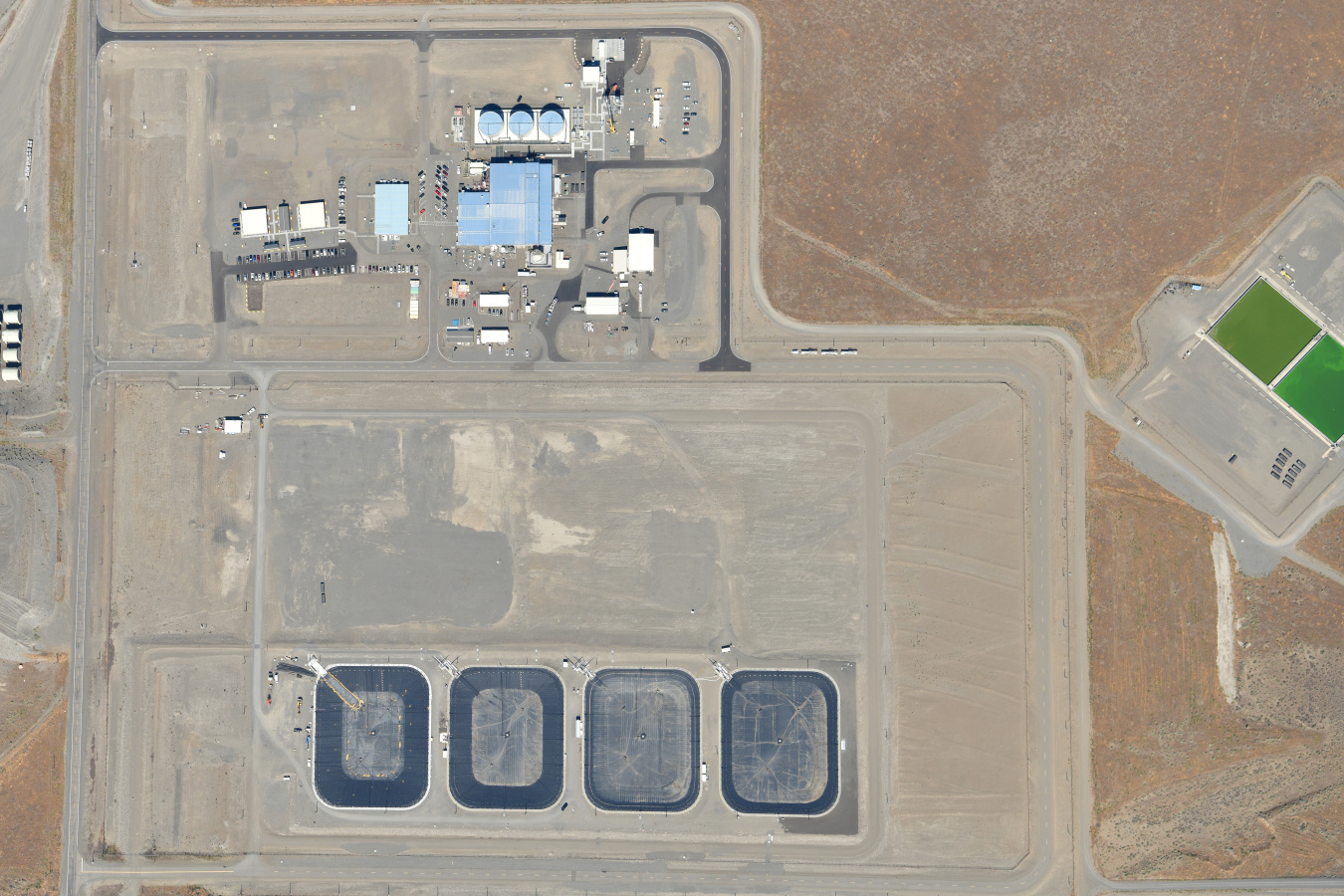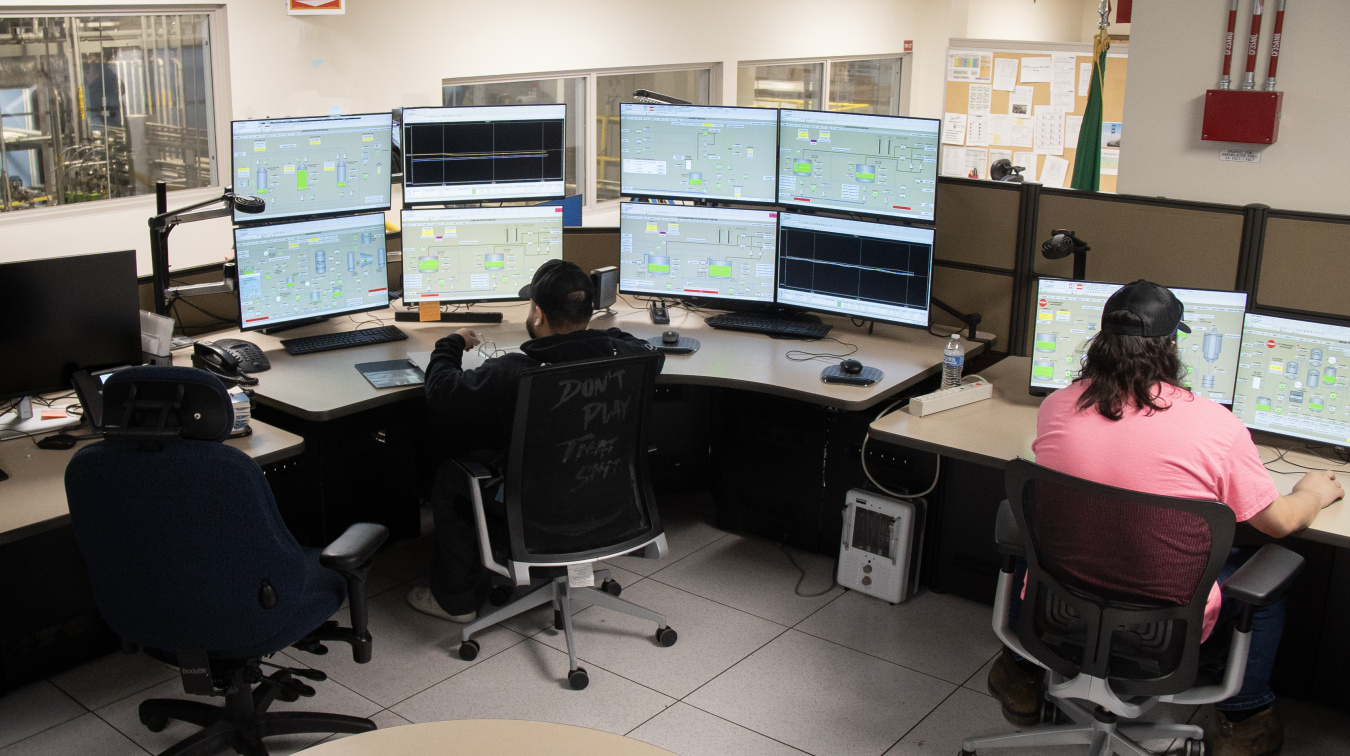Workers at the Hanford Site treated more than 7.25 million gallons of wastewater over a six-month period that ended recently. September 30, 2025
Office of Environmental Management
September 30, 2025The latest processing campaign at the Hanford Site’s Effluent Treatment Facility lowered the level of one wastewater storage basin, the second basin from the right shown here, by almost 17 feet.
RICHLAND, Wash. — Workers at the Hanford Site treated more than 7.25 million gallons of wastewater over a six-month period that ended recently. This effort lowered the water level in one of Hanford’s large wastewater storage basins by almost 17 feet, creating space for future tank-waste treatment operations.
“This progress reduces risk today while also creating space we need for future cleanup,” said Will Ruane, Tank Farms Program Division manager at Hanford Field Office. “Every gallon treated strengthens our ability to protect workers, the environment and the community as we move forward with Hanford’s mission.”
Nuclear chemical operators monitor wastewater processing in the Hanford Site’s Effluent Treatment Facility control room.
A new filtration system is among the many improvements made to the Hanford Site’s Effluent Treatment Facility since 2019 to boost its capacity and reliability.
The water was processed at the Effluent Treatment Facility (ETF), designed to clean contaminated wastewater. Managed by U.S. Department of Energy Office of Environmental Management contractor Hanford Tank Waste Operations & Closure (H2C), the facility has undergone approximately $200 million in upgrades since 2019 to enhance capacity and reliability. These upgrades will help accommodate a new waste stream from the Waste Treatment and Immobilization Plant (WTP), which will turn Hanford’s tank waste into glass for safer storage.
“The upgrades and successful processing campaigns demonstrate our commitment to environmental stewardship and innovation,” said Scott Booth, H2C operations director. “Our efforts are crucial in ensuring the safety and efficiency of waste management at Hanford.”
As part of Hanford’s Direct-Feed Low-Activity Waste Program, the ETF is expected to treat about 5 million gallons of wastewater annually once full operations begin at WTP.
To receive the latest news and updates about the Office of Environmental Management, submit your e-mail address.



